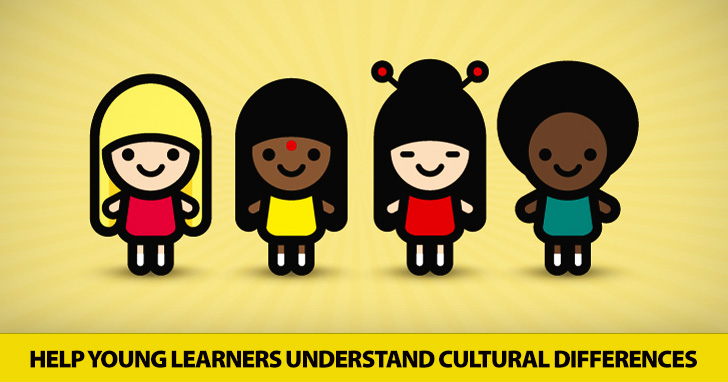Celebrate International Children’s Book Day This April 2nd: Activities for Any Age


It is a huge part of who we are, but how much can we really articulate about what culture means to us? And if we as adults struggle to explain our cultures, how much more so do young English learners ? The fact is, it is hard to explain and appreciate other cultures, but ESL teachers must encourage their students to do it. But how does a teacher of young students help them learn and appreciate other cultures? Here are some ideas for bringing an appreciation of culture to your young ESL students.

Not everyone in your class may speak the same language, but there is one language people throughout the world speak. The international language called love. If you teach young students, they may not understand the depth of this grand emotion, but everyone in your class should be able to relate to the emotion in at least some measure. Give your students a chance to share with the class how to say “I love you” in their native languages. Then, ask each of your students to share a little bit about something in their home culture that they love. It might be a location in their country, a tradition among their people, or simply a family member. On your board, write out the different ways to say “I love…”. Then have each student choose one of the phrases (not their own native language) and complete it with something or someone important to them. Have each person write their sentence at the bottom of a blank page and illustrate the thing or person they love on the top of the page. Underneath the foreign phrase, have your student write the same sentence in English. Once all the sentences and pictures are complete, compile the pages into a class book (or post them on a bulletin board). Make it available in your classroom for students to read during free learning periods.
Your young students may not be much for cooking, but surely they like to eat. Celebrate the cultures your class represents by having an international food day in your room. Invite each student to bring in a dish from their home culture that they like. Then, before you eat, ask each person to say a little bit about the food they brought to share. After the food fair, invite students to share thoughts and reactions to the new foods they tried. As always when food is involved, keep in mind any allergies your students may have and skip activities that may be dangerous for any of your class members.
If you are doing a unit on food, it may be the perfect tie in to a piece of Korean culture for your young students. The Korean vegetable pancakes known as buchim are easy to prepare and are a healthy snack for children. You can get the mix at most Asian groceries (or make it from scratch). To make the pancakes, follow the directions on the mix, and then add chopped vegetables such as carrot, onion, and peppers. As you make the pancakes, talk about the different foods that you are putting into the mix, and ask students to talk about their likes and dislikes. Fry the pancakes up in a little oil and serve with soy sauce. Many foods can be found in multiple cultures with slight variations. (Think ravioli vs. pot stickers vs. pierogis.) As you eat your Korean pancakes, allow your students to share about similar foods in their own cultures or in other cultures they have experienced. You might want to talk about American pancakes, French crepes, and other similar foods.
Chinese New Year is an important event for some of your students. A two week celebration which starts with fireworks and dragon dances might be the highlight of many students’ years. Bring a little of the celebration into your classroom by making dragon “floats” around Chinese New Year. Start by talking about the New Year as a new start. A chance to change things for the better. Then take some time to look at pictures of dragon floats. Then have a little new year’s celebration of your own. Give each student a sturdy paper plate, and them sketch their own dragons on the plate and paint them in red. Staple streamers to the edges of the plate, and have a dragon float parade of your own though the school hallways. After your parade talk about the idea of New Year’s resolutions. Ask volunteers to share something they would like to change in their own lives. You can also encourage students to talk about other things they do around the start of the New Year.
For this activity, you will need paper, straws, and thin paint (you can use water colors or water down some tempera paint). Fireworks are used around the world for various celebrations. You young English students will have fun painting their own fireworks. Give each person a piece of paper and a straw. Then let students put a few dabs of paint on their paper. Try to keep the paint two to three inches apart. You students should then blow through the straw to push the paint around on their paper. As they to, the paint will move in streams from the starting point, making a design which looks like fireworks. When your students have finished their paintings and put them aside to dry, ask them what occasions they have seen fireworks. If students are able, let them share about the events that are important enough to warrant these beautiful displays of light.
Culture may be a tough subject to tackle with any ESL students, and it is only that more difficult when you teach young children. These hands on activities take abstract concepts and make them more concrete for younger learners. And when your students can understand and appreciate other cultures, they will understand and appreciate their classmates more.